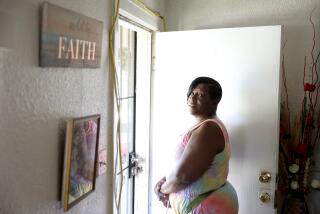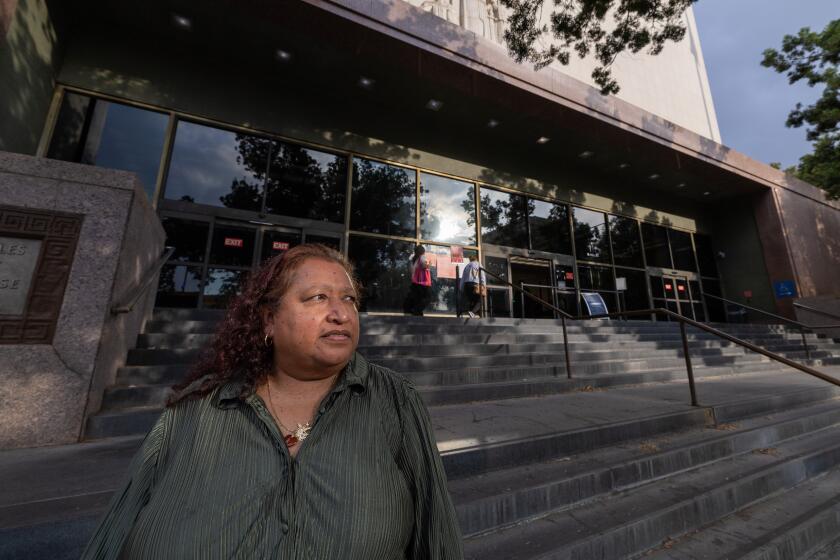Housing Project Site’s History of Oil Storage Still Haunts City
A century ago this land near downtown Los Angeles was ruled by oil: Thousands of barrels’ worth sat stored above ground; thousands more flowed underneath, all feeding a growing metropolis.
Once the oil boom dried up, the land served another need: In the 1940s hundreds of families moved into new apartments, a city housing project known as William Mead Homes. Children played baseball on dirt fields, families planted vegetables on slivers of earth, and nobody thought much about the history of the land.
Now, the land’s past, and its transformation from oil concern to city housing project, are the subject of a string of lawsuits.
The Housing Authority of the City of Los Angeles filed the latest suit last month. The action against ChevronTexaco Corp. seeks to recover more than $4 million spent in the cleanup of contaminated soil at the site.
The lawsuit, filed in Los Angeles Superior Court, accuses a predecessor of ChevronTexaco of causing the contamination by failing to properly maintain control and manage the land, which is near the Twin Towers Correctional Facility, about a mile from City Hall.
A ChevronTexaco spokesman said he was unaware of the lawsuit and would have to research the issue before commenting. Housing Authority officials said company attorneys know about the problem at William Mead. The housing project has 415 units and is home to 1,500 people.
“Over the last couple of years we’ve had constant communication with ChevronTexaco, and for a long time we thought we could come to an amicable agreement,” said Assistant City Atty. Dov Lesel.
The deadline for the city to file a suit against ChevronTexaco was approaching, and, when company representatives did not sign an agreement that would have extended the statute of limitations or enter settlement negotiations, “that left us no choice but to actually file and serve the action,” he said.
The lawsuit centers on the early 20th century use of the land by a company known as Amalgamated. The firm used a portion of the property as a storage facility for crude oil: Four 35,000-barrel tanks sat there, according to the city’s lawsuit.
On land next to the storage facility was a Southern Refining Co. operation, said Bill Davis, a Housing Authority administrator.
By 1926 the storage facility had stopped operations. Amalgamated eventually became ChevronTexaco, and Southern Refining disappeared from all records, Davis said.
“This was during the heyday of the oil boom in L.A.,” Davis said. “Everybody in town was in the oil business. A lot of the deals were done in the back room of the bar in Main Street, and there are no corporate records.”
In 1939 or 1940 the Housing Authority acquired the land that had been owned by Amalgamated, and its oil history eventually faded from institutional memory. In 1942 construction was completed and the development was named for William Mead, a real estate developer and early advocate of affordable housing in Los Angeles.
Decades later, in 1994, a World War II veteran who as a child had been a resident of William Mead, wrote a letter to the Housing Authority. The former resident, who is now in his 70s and lives in Ohio, shared his memories about the land’s past use and told of a high rate of cancer among relatives and friends. Those who were stricken had all played together on the baseball field at William Mead.
That letter sparked an inquiry, and in 1995 the Housing Authority conducted an investigation that revealed the presence of potentially carcinogenic and hazardous substances throughout the site, the lawsuit alleges. The authority argues that the substances date back to the land’s earlier use by Amalgamated and possibly two other companies.
“There is other contamination at the William Mead site that might not be attributable to them, and we recognize that,” Lesel said.
The state Department of Toxic Substances Control, which oversees remediation efforts, reviewed the plans to clean up the land south of Cardinal Street, said Ryan Kinsella, hazardous substances scientist and project manager. Department representatives monitored the site as workers removed nearly 46,000 tons of soil and replaced it with clean dirt.
Officials also warned residents not to grow fruit and vegetables on the land and supplied planter boxes. A play area was fenced off. In 2000 and 2001, the Housing Authority relocated families in 114 units up to three months as work proceeded.
According to the California Department of Health Services, Environmental Health Investigations Branch, “residents who lived in William Mead Housing before 1996 and who did not eat food grown on site would not be expected to have any significant increase in cancer risk (less than 0.005%) from exposure to PAHs from the soil.”
PAHs are a group of chemicals created when gas, coal, oil, wood and other organic materials are burned.
Those residents who ate large amounts of produce grown in contaminated soil may have an increased risk of developing cancer. According to the report, “the maximum additional cancer risk for a resident who lived on the site for 30 years and ate one-fourth of his or her diet from these sources would be 1%.”
The Department of Toxic Substances Control has since signed off on the cleanup of that portion of the area.
“We got rid of it,” Davis said. “We brought in clean soil. We restored the landscape. We restored the baseball field.”
The Housing Authority paid for the cleanup -- money that could have gone to repairs and upgrades of housing projects -- and now seeks to recoup its costs in the lawsuit against ChevronTexaco.
“It was a very intense, very expensive process,” Davis said. “We’d certainly like to get reimbursed for as much of those costs as we can -- and sooner rather than later.”
Another cleanup project is looming. This summer, work will begin to clean up lead-contaminated soil north of Cardinal Street. That land is less contaminated than the other site, and the work will not require residents to be relocated, Davis said.
Yet the history of the land south of Cardinal is at the root of at least three class-action lawsuits against the corporation and the Housing Authority, officials say. Those cases represent about 450 plaintiffs, said Christopher P. Bisgaard, an attorney with a private law firm that is assisting the city attorney’s office with lawsuits related to William Mead.
The former tenant whose letter sparked the investigation apparently was not motivated by a desire to file a lawsuit, Davis said.
“His statement was, ‘I thought it was the right thing to do,’ ” Davis said.
More to Read
Sign up for Essential California
The most important California stories and recommendations in your inbox every morning.
You may occasionally receive promotional content from the Los Angeles Times.










